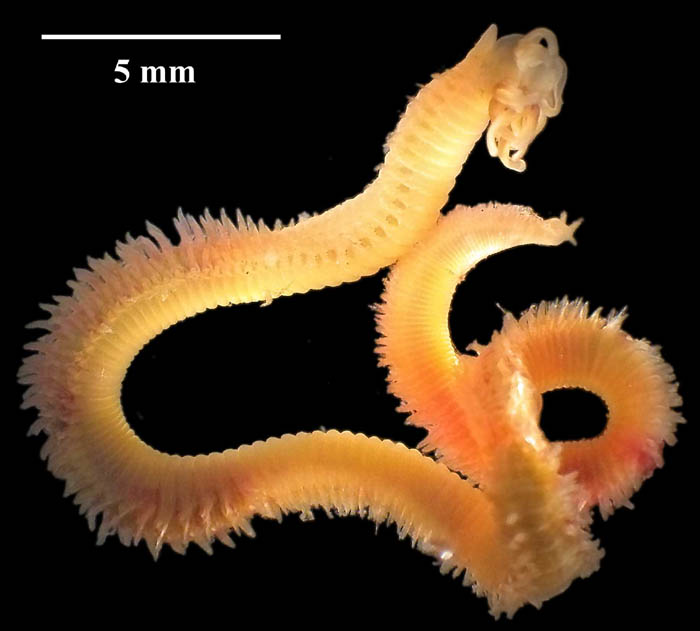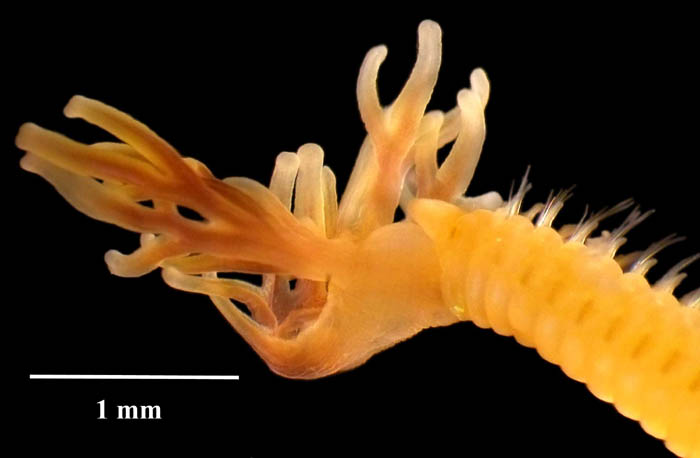Naineris dendritica (Kinberg, 1867)
This native burrowing polychaete commonly inhabits the silty mud found lodged between mussels on marina docks, large bryozoan masses, seagrass and algal holdfasts, and subtidal muddy substrata throughout central San Francisco Bay. Naineris dendritica can also be found on the outer coast in sandy mud habitats from Alaska to California at mid to low tide levels (where they are often collected as bait worms). This orbiniid polychaete uses its rounded head region to burrow into the substrate where it ingests particulate organic matter. Although the worm is considered sedentary, no permanent tubes are constructed and the animal is free to move about its environment.
Adult specimens can attain lengths of up to 17 cm and are typically pale brown to nearly orange in color. N. dendritica are easily distinguished from other SF Bay orbiniids by their bluntly rounded prostomium (head region). The everted proboscis (as shown in detail in the second photo) consists of a rosette of tentacle-shaped lobes. The simple, slender neurosetae are also visible in this photo; the shape of setae in different body regions is typically very useful in diagnosing polychaete species. Polychaetes in the family Orbiniidae have lateral parapodia (along their sides) in thoracic regions and dorsal parapodia (along their backs) in abdominal regions.
Adults
are thought to lay gelatinous egg masses, from which active crawling larvae
emerge to feed among the benthos.


